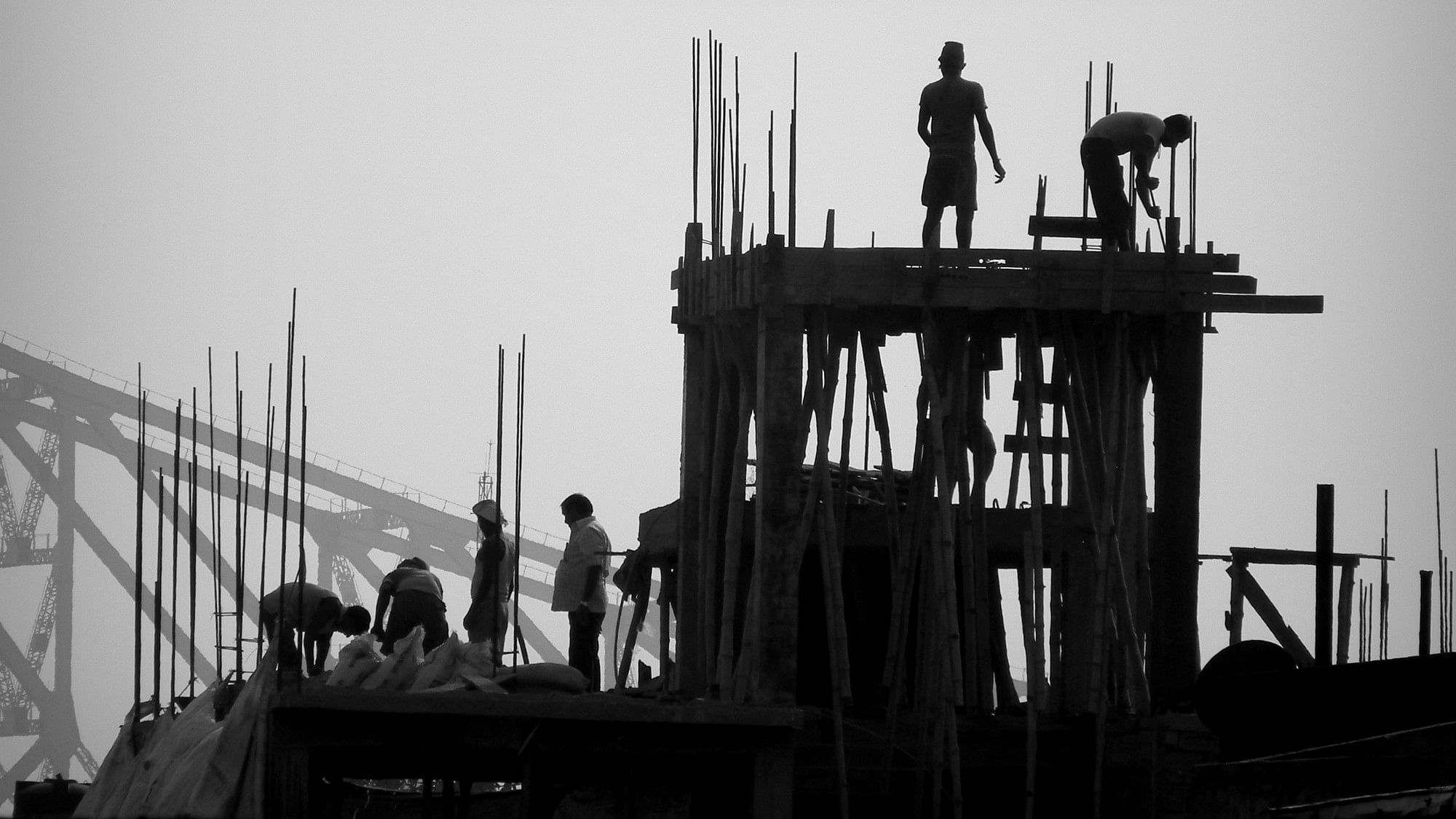
Workers at an under-construction building.
Credit: iStock Photo
The first decision taken by the new Cabinet under the third Narendra Modi-led National Democratic Alliance (NDA) government was to announce 30 million homes in urban and rural India. There was no other way to do it!
The election verdict showed the resentful electorate’s disenchantment with the masses being sidelined in favour of the elite. Jobs, reservation, and a leg up to women for setting up small businesses, all found favour in an era of jobless economic growth.
Step back to the pandemic era when the haves and have-nots realised they needed better homes. Bigger, well-equipped for emergencies and work from home, close to schools, hospitals, and infrastructure that matters. Those who had the means bought and bought again, benefitting from the various sops that the Deepak Parekh committee recommended and governments such as Maharashtra implemented. However, the middle and lower-middle classes found themselves out of jobs and pushed to a gig economy with little money to buy that roof over their heads.
The numbers say it all. The Ficci-Anarock survey found that 50 per cent of homebuyers were seeking 3 BHK homes. Today, over 21 per cent of houses sold in the metros cost over Rs 1.5 crore each. This is a steep rise from 7 per cent in 2019. In 2020, the affordable housing demand was 40 per cent. It shrank to 25 per cent in 2021, and further to 21 per cent in H2 2023. For a section of society that has been struggling to find and keep jobs, buying a house cannot be the priority.
Affordable rental housing: While one segment of society is buying its first, second, and even holiday homes, the masses, with no jobs or job tenure security, must live on rent. That is where the second blow took place. As the returning workforces pushed up rental values, the masses were forced once again to live in often illegal, smaller houses at higher rental values. The government needed to step on the gas to produce more affordable rental housing, especially in urban India.
In the 1970s, India became a manufacturing nation with many jobs in the sector. This drew rural folk to urban areas but neither the planners nor employers thought of providing the workers with housing. Consequently, over 50 per cent of urban India was housed in slums. Today, with the price of land at an all-time high, the new employees of the manufacturing sector and the gig economy do not have the wherewithal to pay high rents nor to buy a house of their own. Slums have been cleared in favour of premium commercial and residential complexes. Slum dwellers were housed in high rises that mirrored their earlier bleak dwellings. Can that be adequate to house the young professionals and manufacturing sector workers?
Rent subsidies: There are many ways to counter this problem. In cities like New York, employers get compensated for providing lower-level employees with housing subsidies. By making sure that it is the corporate house that pays the rent, the entire system is encouraged to build institutional housing for the not-so-rich. Like the EV two-wheelers made working in the gig economy possible for the economically displaced, there must be a solution that comes to the masses at an affordable cost.
Providing affordable housing below Rs 40 lakh per unit has not been viable for the private sector. This is why it keeps clamouring for larger and more expensive houses to become part of the affordable category. Governments across the world are trying to address this issue. Singapore keeps the Housing and Development Board housing cheaper so that everyone can afford to buy them. The payment comes through the central provident fund of buyers.
Similarly, it may be time to revive the housing development authorities in India to make affordable rental housing available. Today government agencies are the biggest speculators in land. A Delhi Development Authority (DDA) that was allowed to acquire land at a cheap rate is today competing with the private sector to create premium housing. That defeats the social objective with which the land was acquired.
Unless the new government cracks this vital issue, consumer disenchantment will continue. With an increasingly consumerist population that sacrifices nutrition in favour of consumer goods, it is imperative that there is a serious debate to find solutions to urban and rural housing.
A blanket announcement of more affordable housing in the hope that the private sector will build them is a pipe dream.
(E Jayashree Kurup is a writer-researcher in real estate, and Director, Real Estate & Cities, Wordmeister Editorial Services)
Disclaimer: The views expressed above are the author's own. They do not necessarily reflect the views of DH.
